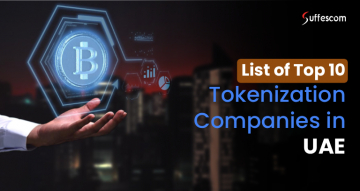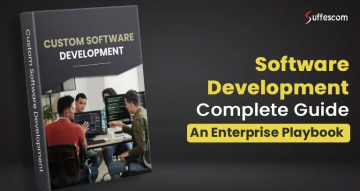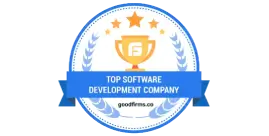Build Real-World Asset Tokenization Platforms on Kaanch Blockchain

A gradually emerging Layer-1 blockchain protocol, Kaanch Network is gaining the spotlight in the crypto space. For builders and institutions, a Kaanch network guide for RWA development can help navigate the tokenization process smoothly.
Due to its unique value proposition, Kaanch has been able to overcome the limitations of prominent networks like Solana and Ethereum by redefining scalability and cost-efficiency.
Many companies, governments, and organizations are working rapidly to bring real-world assets like property, bonds, certificates, and records into digital form. To support this shift, the technology behind blockchains needs to improve and grow.
That’s where Kaanch comes in. It’s a new kind of blockchain built to handle the rules, systems, and safety checks needed for turning real-world assets into digital ones.
As more people around the world show interest in tokenizing real-world assets, the Kaanch is gaining attention. Its early fundraising has already brought in over $1.12 million.
Whether you're an enterprise, startup, or Web3 builder, this guide explores how you can tokenize RWAs on the Kaanch network with efficiency and security.
Launch Kaanch RWA Projects with Speed, Security, and Simplicity
Bring your Kaanch RWA ideas to life, quickly, securely, and with zero complexity.
Brief Overview of the Kaanch Network
Kaanch Network is a next-gen Layer 1 blockchain that claims to have unmatched speed and scalability. According to the official website, Kaanch has set a new record by processing up to 1.4 million transactions per second.
Note that Solana, an industry-leader and a prominent blockchain network, has a TPS of 3,865. Kaanch’s ability is far ahead of the existing players. With the constant advancements, Kaanch is likely to be the leading blockchain network.
Kaanch is powered by over 3,600 nodes that improve security and performance, along with negligible gas fees. It is the latest advancement in DeFi, ensuring faster, secure, and affordable transactions.
The following are the statistics defining Kaanch’s capability-
- 25527261 - Blocks produced
- 55042024 - On-chain transactions
- 0.8s - Block time
- < $0.0001 - Average transaction cost
Did you know? Ethereum handles ~15 TPS, while Solana maxes out near 7,000 TPS. Kaanch exceeds both, making it ideal for asset-heavy, high-frequency applications.
Why Choose Kaanch for RWA Tokenization?
Kaanch offers a secure, scalable platform for decentralized applications, enterprise adoption, and RWA blockchain tokenized real-world assets. Two major elements: the key features of Kaanch and its comparison with other blockchain platforms help us understand why to choose Kaanch for RWA tokenization. Let's start with the features;
1. Developer-Friendly Ecosystem
Comprehensive APIs, SDKs, and cross-chain compatibility make Kaanch accessible and ideal for building innovative blockchain solutions. Developers can easily integrate Kaanch into their existing systems or create entirely new applications from scratch.
Its robust toolset supports seamless development across various blockchain networks, enabling faster time-to-market and enhanced scalability.
Whether you're working on tokenized assets, decentralized finance (DeFi) platforms, or digital identity systems, Kaanch provides the flexibility and infrastructure needed to support complex use cases while ensuring security, compliance, and performance at scale.
2. Energy-Efficient Consensus
Built on Proof-of-Stake (PoS), Kaanch minimizes energy consumption while maintaining top-tier performance, aligning with sustainability goals. This eco-friendly approach not only reduces the network’s carbon footprint but also makes it more cost-effective and scalable for long-term growth.
Unlike traditional Proof-of-Work (PoW) systems that require extensive computational resources, Kaanch’s consensus mechanism allows for faster transaction processing, lower operational costs, and greater accessibility for validators.
This makes it a forward-thinking choice for developers, enterprises, and institutions looking to adopt green blockchain technology without compromising speed, security, or decentralization.
3. Cross-Chain Interoperability
As blockchain ecosystems continue to expand, cross-chain interoperability has become essential for enabling fluid and efficient asset movement. Kaanch addresses this need by offering built-in support for seamless interactions across multiple blockchains.
By eliminating the barriers of isolated networks, Kaanch empowers developers and users to transfer assets, share data, and interact with smart contracts across chains, enhancing scalability, usability, and ecosystem connectivity.
4. Higher Security
Kaanch is protected by 3,600 decentralized nodes, making it highly reliable and secure. This setup means every transaction is safely verified and recorded, reducing the risk of hacks or failures.
Since there's no central control point, the network stays strong and trustworthy. With Kaanch, you get a truly secure and decentralized experience.
5. Lowest Gas Fees
Kaanch offers a low-cost transaction model with near-zero gas fees, helping make blockchain usage faster, more affordable, and easier to access. Removing the typical cost barriers allows broader participation in blockchain-based applications.
Designed for efficiency and scalability, Kaanch supports a more inclusive approach to digital innovation and economic participation.
Let's compare Kaanch Network with other blockchain networks. This section highlights RWA vs traditional assets on Kaanch Network in terms of speed, cost, energy usage, and interoperability.
6. Speed
Kaanch is extremely faster than other prominent blockchain networks such as Ethereum, Solana, and Polygon. Kaanch works at 1.4 million TPS, Polygon executes 7,000 TPS, and Solana does approximately 3,000 transactions, whereas Ethereum is the slowest.
7. Cost
Kaanch is the most affordable blockchain, offering near-zero gas fees. Solana and Polygon are also low-cost, while Ethereum is the most expensive, with fees that can reach up to $50.
8. Energy Consumption
With eco-friendly PoS, Kaanch’s energy usage is extremely energy efficient. Solana and Polygon have moderate and low energy consumption. Ethereum ranks lowest in conserving energy.
9. Chain Connections
Kaanch comes with built-in cross-chain support, allowing cross-chain interoperability. Ethereum needs add-on bridges for establishing the connections. Polygon functions on setting compatibility with Ethereum, whereas Solana has very limited interoperability.
Build a Decentralized Future on Kaanch Network Today.
Start your journey toward tokenized assets and low-cost blockchain solutions with Kaanch today.
Kaanch vs. Ethereum, Solana & Polygon for RWA
| Feature | Kaanch | Ethereum | Solana | Polygon |
| TPS | 1.4M+ | ~15 | ~3,865 | ~7,000 |
| Gas Fees | <$0.0001 | Up to $50 | Low | Low |
| Energy Usage | Very Low | High | Moderate | Low |
| Cross-Chain | Native | Add-on Bridge | Limited | Compatible |
Key Components of Building an RWA Platform on Kaanch
There are specific components that facilitate the creation of RWA on Kaanch.
1. Compliance-Ready Smart Contracts
Smart contracts are an integral component of a blockchain network. With Kaanch, compliance comes readily, and smart contracts are planted with regulatory and legal rules so that the tokenized assets follow jurisdictional standards.
2. Decentralized Identity Layer
Kaanch uses ‘.knch’ domains as digital IDs, and these help verify the users on the blockchain. This provision enables adherence to legal rules to keep operations secure and transparent.
3. Interoperability Bridges
The differentiating characteristic of Kaanch is its ability to easily connect with other popular blockchains like Ethereum, Solana, and BNB. Interoperability bridges play a crucial role in ensuring seamless connectivity.
It allows the assets to move across various networks without a problem, to increase flexibility and market reach.
4. RWA Tokenization Framework
Kaanch’s RWA tokenization framework standardizes how real-world assets are transformed into digital tokens. Such a framework ensures that all the tokens follow a set legal and financial structure.
5. DAO Governance Systems
Kaanch's users have the power to vote on crucial decisions on the blockchain network using a community system called a DAO (Decentralized Autonomous Organization). This includes voting on upgrades, rule changes, and how funds are used, making the platform more fair and community-driven.
Get Started with RWA Tokenization on Kaanch Blockchain
Our experts help you build secure, compliant, and scalable tokenized asset platforms using Kaanch Network.
How to Build an RWA Platform on Kaanch Network?
Here's a step-by-step process of RWA token creation on Kaanch-
1. Define the RWA and Compliance Requirements
Start by deciding what kind of real-world asset (RWA) you want to bring onto the blockchain. This could be real estate, gold, bonds, or certificates. Next, check the legal rules around digitizing and trading that type of asset. This includes following KYC (Know Your Customer), AML (Anti-Money Laundering), and regional compliance guidelines.
2. Set Up Your Kaanch Development Environment
Prepare your system to work with the Kaanch. Install the necessary software tools, connect to the network, and configure your development environment. You'll need access to Kaanch SDKs and node clients to write, test, and deploy your smart contracts.
3. Write and Deploy the RWA Smart Contract
Create a smart contract that represents the real-world asset digitally. This contract should handle ownership, transfers, and rules for how the token can be used. Follow Kaanch token standards to ensure compatibility. Once ready, deploy the contract on a test network for initial validation.
4. Integrate Oracles for Real-World Data
Oracles are essential to feed external, real-world data into your smart contract. Choose reliable Oracle providers that can supply accurate information like market prices, property status, or asset ownership. Integration ensures that your RWA token reflects the true status of the asset.
5. Testing and Security Audits
Test your smart contract thoroughly using local and public testnets. This helps identify bugs and ensures everything works correctly. After testing, conduct a professional security audit to check for vulnerabilities. Audits help protect your project from potential risks or attacks.
6. Launch on Mainnet and Monitor
Once your contract is fully tested and audited, launch it on the Kaanch mainnet. This makes your RWA project live. After deployment, set up monitoring tools to track performance, activity, and any unusual behavior. Also, prepare a governance plan for managing updates or changes over time.
Conclusion: Why Kaanch Is the Future of RWA Tokenization
Tokenizing real-world assets is not just a trend, it's a foundational shift in how we represent and trade value. As global demand for RWA tokenization rises, platforms that offer speed, security, scalability, and compliance will lead the future of finance.
Kaanch Network is purpose-built to meet these needs, outperforming legacy chains like Ethereum and Solana with its unmatched TPS, ultra-low fees, and regulatory-ready architecture. Whether you’re an enterprise, a government agency, or a Web3 startup, Kaanch gives you the infrastructure to launch powerful, scalable RWA platforms without compromise.
FAQs
1. What is real-world asset tokenization?
RWA tokenization turns real-world assets like real estate, commodities, or invoices into blockchain-based tokens. This improves liquidity, fractional ownership, and global tradability.
2. How to build an RWA platform on the Kaanch network?
The process to build the RWA platform on Kaanch network starts with defining the RWA and compliance requirements, followed by setting up your Kaanch development environment, writing and deploying the RWA smart contract, integrating oracles for real-world data, testing and auditing, and ends with launching on Mainnet and monitoring it.
3. What are the benefits of using Kaanch for RWA tokenization?
There are various benefits of using Kaanch for RWA tokenization, such as a developer-friendly ecosystem, energy-efficient consensus, cross-chain interoperability, higher security, and lowest gas fees.
4. Why choose Kaanch for real-world assets tokenization?
Kaanch is a promising choice for real-world asset (RWA) tokenization due to its focus on speed, scalability, security, and interoperability, all while fostering community-driven governance.
5. Can I move assets from Ethereum to Kaanch?
Absolutely. Kaanch supports built-in interoperability bridges to Ethereum, Solana, and BNB — enabling smooth asset movement.
6. Is Kaanch better than Ethereum for asset tokenization?
Yes. Kaanch is faster, cheaper, and natively supports compliance and cross-chain integrations, making it a better option for large-scale asset tokenization.







